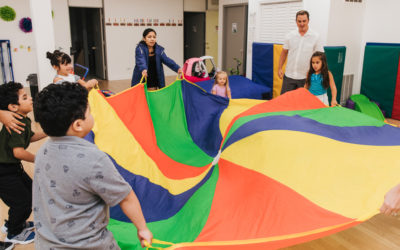Autism is a colorful phenomenon with a variety of symptoms and as such, has several related symbols and colors when being portrayed publicly and in the media. In this post, we’ll break down a few of the most common symbols and colors used to represent the autism spectrum.
The Rainbow Spectrum
Most closely tied to the concept of the autism spectrum, a range of colors on the rainbow has often been used to visually represent the range of autism symptoms and individuals with autism’s abilities and challenges. This rainbow spectrum is often paired with the puzzle piece logo, the infinity symbol, or the ribbon.
Light it Up Blue
On world autism awareness day, April 2nd, you may see plenty of blue being shown off to support autism awareness. The color blue’s association to autism originated with the autism advocacy association known as Autism Speaks. Their “Light it Up Blue” campaign calls for people to wear blue to promote autism awareness. Blue is also the organization’s primary color, and is associated with a calm feeling and acceptance in an otherwise loud and busy world for people on the spectrum.
The Puzzle Piece
The puzzle piece is also a common symbol used to represent autism, and was made famous by Autism Speaks. Its use has garnered both positive and negative attention, as many individuals on the spectrum today feel it is too closely related to the idea of people with autism “not fitting in” to societal expectations and social circles. The puzzle piece is commonly paired with the color blue or a rainbow spectrum.
The Butterfly
A relatively new symbol for autism, the butterfly has been a suggested replacement for the puzzle piece as it inspires thoughts of change and symbolizes the beauty of diversity and continued development. Many today consider it a symbol indicative of the beauty of a different perspective and the importance of continued development.
The Infinity Symbol
Another newer alternative, the infinity symbol inspires thoughts of inclusivity for people on the spectrum. It is commonly displayed with colors of the rainbow or a solid color.
Though these symbols and others have represented autism through the years, individuals on the spectrum tend to adopt their own way of representing the way autism has affected their lives.
For more ABA and autism related news and tips visit our blog and follow us on Facebook, Instagram, and Twitter! If you have questions regarding ABA therapy services or you’re interested in visiting one of our locations, don’t hesitate to reach out to us on our contact page. We’re always here to answer your questions and support your family’s needs as best as we can.



